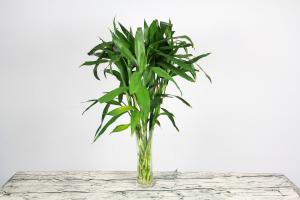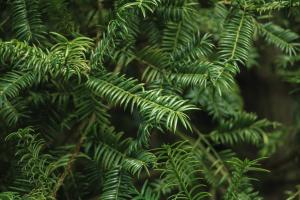Which Types of Plants do the Mangrove Trees Belong?
Mangrove trees are a group of plants that are adapted to life in coastal environments with high salinity, strong tidal currents, and fluctuating water levels. These trees are commonly found in tropical and subtropical regions around the world, and they play a critical role in stabilizing coastal ecosystems while providing a range of ecological and economic benefits.
Mangrove Tree Characteristics
Mangrove trees are unique in many aspects of their anatomy and physiology, which allows them to thrive in challenging coastal environments. Some of their characteristic features include:
Adaptations for saltwater tolerance: Mangrove trees have specialized glands that excrete salt, allowing them to survive in water with high salinity levels. They also have thick waxy leaves that prevent water loss through transpiration.
Air-breathing roots: Mangrove trees have a system of roots that stick up from the mud to enable them to take in air during high tide or flooding. These roots also help to anchor the trees in the soft soils of coastal areas.
Tolerance to waterlogging: Mangrove trees are able to survive in soils that are waterlogged for long periods by converting the toxic sulfides that are present into non-toxic compounds.
Types of Mangrove Trees
There are about 80 species of trees and shrubs that are commonly referred to as mangroves, and they belong to several families of plants. Some of the most common types of mangrove trees include:
Red mangrove (Rhizophora mangle): This is one of the most recognizable mangrove species, with its distinctive aerial prop roots that provide support and oxygen exchange. Red mangroves are found in the Americas, Africa, and Asia.
Black mangrove (Avicennia germinans): This species has pneumatophores, or specialized roots that stick up above the water line to take in air. Black mangroves are found throughout the Americas, in Africa, and in some parts of South Asia and Australia.
White mangrove (Laguncularia racemosa): This species has no aerial roots and is often found landward of the more salt-tolerant red and black mangroves. White mangroves are found in the Americas, West Africa, and Oceania.
Ecosystem Services of Mangrove Trees
Mangrove trees provide a range of ecosystem services that are critical for the health of coastal environments and the well-being of human communities that rely on them. Some of these services include:
Protection against storms and erosion: The dense roots and canopy of mangrove trees help to stabilize shorelines and protect coastal communities from the damaging effects of storms and erosion.
Carbon sequestration: Mangrove forests are highly efficient at capturing and storing carbon, which helps to mitigate the impacts of climate change.
Habitat for fish and wildlife: The intricate root systems of mangrove trees provide important habitat for a variety of fish and wildlife species, including endangered and threatened species.
Timber and non-timber forest products: Mangrove trees are a source of valuable timber, fuelwood, and non-timber forest products such as honey, medicinal plants, and fish.
Threats to Mangrove Trees
Despite their critical role in coastal ecosystems, mangrove trees are under threat from a range of human activities and environmental pressures. Some of the most significant threats include:
Coastal development and urbanization: The conversion of coastal areas to urban and industrial development leads to habitat loss and fragmentation, which can reduce the resilience of mangrove ecosystems.
Deforestation and land-use change: The cutting and removal of mangrove trees for timber, fuelwood, and other purposes can lead to the loss of habitat and the degradation of ecological services like carbon storage and erosion control.
Climate change and sea level rise: Rising sea levels and temperatures due to climate change can alter the physical and biological conditions of coastal ecosystems, making it more difficult for mangrove trees to survive and thrive.
Pollution and overfishing: Human activities such as pollution and overfishing can disrupt the delicate ecological balance of mangrove ecosystems, leading to the loss of biodiversity and ecological services.
Conclusion
In conclusion, mangrove trees are a unique and important group of plants that play a critical role in stabilizing coastal ecosystems while providing important ecological and economic services. However, these trees are facing significant threats from human activities and environmental pressures, highlighting the urgent need for conservation and management measures to ensure their survival and continued provisioning of ecological services.

 how many times do yo...
how many times do yo... how many planted tre...
how many planted tre... how many pine trees ...
how many pine trees ... how many pecan trees...
how many pecan trees... how many plants comp...
how many plants comp... how many plants can ...
how many plants can ... how many plants and ...
how many plants and ... how many pepper plan...
how many pepper plan...

































